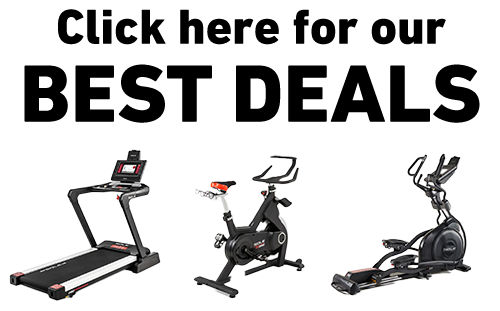Key Takeaways
- Kettlebell swings emphasize explosive power and target multiple muscle groups simultaneously, while hip thrusts maximize glute activation and strength development.
- The hip hinge pattern in kettlebell swings makes them ideal for improving athletic performance in sports requiring explosive hip extension, like boxing and sprinting.
- Hip thrusts allow for greater progressive overload and are superior for hypertrophy, making them the preferred choice for aesthetic glute development.
- Both exercises complement each other in a well-rounded fitness program, with kettlebell swings offering metabolic conditioning benefits and hip thrusts providing targeted strength gains.
- SOLE's SW116 Weight Bench and SW111 Olympic Barbell provide the foundation for progressive hip thrust training, while the Equipment Mat supports kettlebell swing technique and floor-based posterior chain work.
Kettlebell Swings vs Hip Thrusts: Which Posterior Chain Exercise Reigns Supreme?
Both kettlebell swings and hip thrusts are powerful movements that target similar muscle groups but with distinctly different benefits and applications. Understanding these differences helps you optimize your training results based on your specific goals.
Primary Muscle Activation Differences
Kettlebell swings and hip thrusts both target the posterior chain—the powerful muscle group running along the back of your body, but they do so in fundamentally different ways.
Kettlebell swings generate explosive power through a dynamic hip hinge movement, engaging the entire posterior chain from calves to upper back in one fluid motion. The emphasis is on speed, power production, and full-body coordination.
Hip thrusts, by contrast, isolate and maximize glute activation through a controlled, vertical hip extension movement. While kettlebell swings distribute the workload across multiple muscle groups, hip thrusts concentrate tension specifically on the gluteus maximus.
The loading patterns differ significantly as well. Kettlebell swings utilize dynamic, ballistic loading with momentum as a key component, while hip thrusts apply constant tension throughout a controlled range of motion.
This distinction means kettlebell swings better develop power and rate of force production, while hip thrusts excel at building maximal strength and muscle hypertrophy in the glutes.
Exercise Goals and Selection Guide
Choosing between kettlebell swings and hip thrusts should align with your specific fitness objectives. For athletes seeking to improve explosive power for sports like boxing, sprinting, or jumping, kettlebell swings offer superior carryover due to their ballistic nature and hip hinge pattern.
The swing's dynamic movement better mimics athletic actions and develops the rapid hip extension crucial for sports performance.
If your primary goal is aesthetic development or maximal strength in the glutes, hip thrusts deserve priority. Their isolated focus on the gluteus maximus with heavy loading potential makes them unmatched for building impressive glute size and strength.
Bodybuilders and physique athletes often prefer hip thrusts because they allow for progressive overload with heavier weights than typically used in kettlebell swings.
|
Build Your Foundation with Premium-Grade Strength Equipment!
 Complete Your Home Gym:
Why Choose SOLE Strength: ✓ Heavy-duty steel construction with rust protection 30-Day Money-Back Guarantee: Love it or return it, no questions asked. |
Kettlebell Swing Breakdown

The kettlebell swing stands as one of the most efficient functional movements in fitness, integrating multiple muscle groups through a natural movement pattern.
Muscles Worked in Kettlebell Swings
While often classified as a posterior chain exercise, the kettlebell swing works a range of muscles throughout the entire body. The primary movers are the glutes and hamstrings, which generate the explosive hip extension that powers the swing.
Your lower back muscles (erector spinae) work isometrically to maintain a neutral spine position throughout the movement, while your core musculature, including the transverse abdominis, obliques, and rectus abdominis, fire continuously to stabilize your trunk.
Upper body engagement shouldn't be overlooked either. Your trapezius, deltoids, and latissimus dorsi all work to control the kettlebell's path and deceleration. Even your forearm flexors get substantial work as they maintain your grip on the kettlebell handle.
Proper Form: The Hip Hinge Is Everything
Mastering the hip hinge movement pattern is absolutely critical for effective and safe kettlebell swings. This fundamental movement involves bending at the hips while maintaining a neutral spine, allowing the hips to move posteriorly while the chest moves forward.
Common form errors include squatting instead of hinging, rounding the lower back, or using the arms to lift the kettlebell rather than allowing hip extension to drive the movement.
To perform a proper kettlebell swing, start with the kettlebell about a foot in front of you. Hinge at the hips to reach down and grasp the handle with both hands.
Your shins should remain nearly vertical, with most of the bend occurring at the hips rather than the knees. Drive through your heels and explosively extend your hips to propel the kettlebell forward and up.
Power Production and Athletic Carryover
The kettlebell swing's ability to develop power output makes it invaluable for athletic performance. Regular kettlebell swing training can increase vertical jump height, sprint speed, and overall power production.
This carryover occurs because the explosive hip extension in a kettlebell swing closely mimics the force production pattern needed in jumping, sprinting, and throwing movements.
For combat sports athletes like boxers and MMA fighters, kettlebell swings develop the rotational power and hip drive that translates directly to punching and kicking force.
Hip Thrust Mechanics

The hip thrust has revolutionized lower body training by optimizing the angle of force for maximum glute development through horizontal loading patterns.
Muscles Targeted During Hip Thrusts
While the gluteus maximus receives the majority of activation during hip thrusts, several supporting muscles contribute to the movement. The gluteus medius and minimus assist in stabilization, while the hamstrings act as synergists in extending the hip.
Your erector spinae work isometrically to maintain proper positioning, and your core muscles, particularly the rectus abdominis and transverse abdominis, engage to stabilize your pelvis throughout the movement.
Setting Up for Success: Bench Position and Bar Placement
Proper setup is crucial for hip thrust effectiveness and safety. Position a bench or box that places your shoulder blades at the edge when you sit on the floor with your back against it, typically 14–16 inches high for most individuals.
Your feet should be placed approximately shoulder-width apart, with knees bent at roughly 90 degrees when your hips are lowered.
Bar placement makes a significant difference in comfort and effectiveness. The loaded barbell should rest in the crease where your hips meet your thighs, directly above your pubic bone.
A specialized hip thrust pad or thick bar pad is strongly recommended to reduce discomfort from the direct pressure.
Progressive Overload Potential
Hip thrusts offer exceptional potential for progressive overload, which is crucial for continuous strength and muscle development.
Unlike kettlebell swings where technique can limit load increases, hip thrusts allow for systematic weight progression well into the advanced stages of training.
Many dedicated lifters eventually progress to thrusting several times their bodyweight, creating a powerful stimulus for glute hypertrophy and strength gains.
Hypertrophy Advantages for Glute Development
For purely aesthetic glute development, hip thrusts stand in a class of their own. Their ability to create continuous tension on the glutes through the entire range of motion, particularly at the point of peak contraction, optimizes the stimulus for muscle growth.
This makes hip thrusts remarkably effective for creating the defined, developed gluteal appearance sought by many fitness enthusiasts.
This targeted stimulus explains why dedicated hip thrust training often produces visible glute development more rapidly than traditional compound lower body exercises.
Head-to-Head Comparison: Performance Metrics
Equipment Requirements and Accessibility
Kettlebell swings require minimal equipment; just a single kettlebell of appropriate weight. This makes them highly accessible for home workouts, travel, or limited gym settings.
The space requirements are also minimal, needing only enough room to swing the weight safely without hitting anything.
Hip thrusts demand more substantial equipment for optimal execution. At minimum, you'll need a sturdy bench or box, a barbell, weight plates, and ideally a specialized hip thrust pad or thick bar padding.
Learning Curve and Technique Mastery
Kettlebell swings present a steeper initial learning curve than hip thrusts for most individuals. The swing, combined with the precision required in the hip hinge pattern, often requires dedicated coaching and practice to master. Most beginners need at least 3–5 supervised sessions to develop basic competency.
Hip thrusts, by comparison, typically present a more straightforward learning process for newcomers. The stable points of contact (upper back, feet, and floor) provide immediate feedback about proper positioning. The controlled tempo allows for easier adjustments during the movement.
Build Complete Posterior Chain Power with SOLE

SOLE's comprehensive strength equipment provides everything needed for complete posterior chain development through both explosive power and targeted strength training.
SOLE's SW116 Weight Bench is the cornerstone for hip thrust training, providing the precise elevation and rock-solid stability needed for progressive loading.
The commercial-grade construction handles heavy barbell hip thrusts safely, while the 9 adjustable positions accommodate different body types and exercise variations. The ergonomic design ensures proper shoulder blade positioning that maximizes glute activation throughout the movement.
The SW111 Olympic Barbell completes your hip thrust setup with precision-engineered Olympic standard construction. The balanced design ensures smooth, controlled movements with proper weight distribution, while the heavy-duty steel construction with rust protection supports progressive loading from beginner to advanced levels.
For kettlebell swing alternatives and complementary posterior chain work, the SW180 Adjustable Dumbbells provide 16 weight options from 5–80 pounds.
Use them for goblet squats, Romanian deadlifts, single-leg deadlifts, and other hip-dominant movements that build the same explosive power and posterior chain strength as kettlebell swings. The quick-adjust dial system makes weight changes seamless between exercises and sets.
The SOLE Equipment Mat provides essential support for both exercise types—cushioning the starting position for swing-style movements and protecting the flooring during heavy hip thrust setups.
The superior grip prevents slipping during dynamic movements, while the generous 36.5" x 78" size accommodates all training positions comfortably.
For comprehensive posterior chain conditioning that bridges both training styles, the SR550 Rowing Machine delivers powerful full-body engagement similar to kettlebell swings while building the glute and hamstring strength emphasized in hip thrusts.
The dual air and magnetic resistance system provides smooth, adjustable resistance for both explosive power work and strength-endurance training.
The SOLE+ App includes structured posterior chain programs that systematically progress through both explosive power development and maximal strength training, ensuring balanced development across all training qualities.
Check out the SOLE strength collection today!
Frequently Asked Questions (FAQs)
Can kettlebell swings replace deadlifts in my training program?
Kettlebell swings can serve as a partial substitute for deadlifts but not a complete replacement. While both exercises train the hip hinge pattern and posterior chain, deadlifts allow for significantly greater loading and develop maximal strength more effectively. The ideal approach for most lifters is to use both exercises synergistically—deadlifts for maximal strength development and kettlebell swings for power, conditioning, and movement pattern reinforcement.
How heavy should I go for hip thrusts compared to my squat weight?
Most experienced lifters can hip thrust significantly more weight than they can squat, typically 1.2–1.5 times their back squat max. This difference occurs because hip thrusts isolate the strongest muscles in your lower body (the glutes) in their mechanically advantageous position. Begin with approximately 70% of your squat weight when first learning hip thrusts, then progress based on performance and comfort.
Will kettlebell swings make my lower back sore, and is that normal?
Some mild muscular soreness in the lower back following kettlebell swings can be normal, particularly for beginners or after increasing volume or intensity. This soreness should feel muscular in nature; a general tightness or dull ache in the erector spinae muscles. However, sharp, localized, or radiating pain is never normal and indicates improper technique or excessive loading.
How many times per week should I perform hip thrusts for best results?
For optimal glute development, most individuals respond best to training hip thrusts 2–3 times per week with at least 48 hours between sessions. This frequency balances sufficient stimulus for growth with adequate recovery time. Those prioritizing strength might perform heavy hip thrusts (3–6 rep range) twice weekly, while those focused on hypertrophy might utilize a heavy session and a higher-rep metabolic session (10–15 reps) within the same week.
How does SOLE equipment support both kettlebell swings and hip thrust training?
SOLE has a range of equipment for both exercises. The SW116 Weight Bench is essential for hip thrusts, providing the rock-solid elevation needed for proper shoulder blade positioning and the stability required for heavy loading. The SW111 Olympic Barbell is the foundation for progressive hip thrust loading, featuring precision-engineered Olympic standard construction. For kettlebell swing training, the SOLE Equipment Mat provides essential cushioning and stability for the starting position and any floor-based posterior chain work.




Leave a comment
This site is protected by hCaptcha and the hCaptcha Privacy Policy and Terms of Service apply.